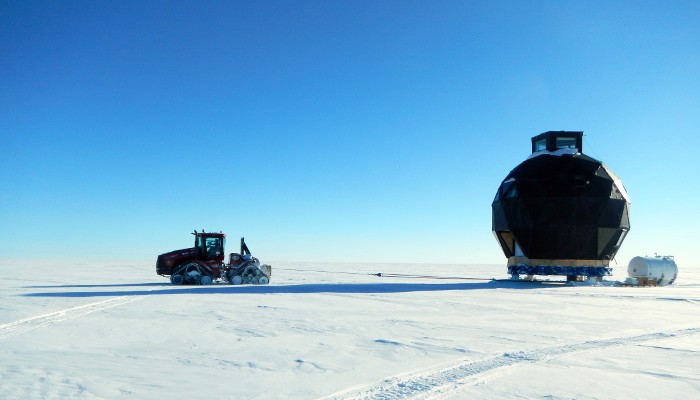What is happening under a glacier? This is a difficult questions to answer as accessing the glacier bed is usually not that easy. Here, we are getting a rare glimpse of the different processes and materials that are often found at the ice-bed interface. The photograph shows both sediments and hard rock, clear ice and dirty ice, and of course flowing water. No wonder these processes are complicated ...[Read More]
Image of the Week: Hochjochferner
The margin of the glacier “Hochjochferner” on the border between Austria and Italy. This glacier has been monitored with an Automatic Weather Station for several years by the Institute for Marine and Atmospheric research in Utrecth, NL.It is also the destination of the field trip that takes place during the annual Karthaus summer school in ice and climate. Here, students are exploring ...[Read More]
Image of the Week: GISP II Borehole

Climate records from ice cores have helped scientists understand the past changes in climate.The GISP II (Greenland Ice Sheet Project Two) ice core was more than 3km long and was drilled during a five year period in the 1990s. After the drilling ended the casing of the borehole was extended above the surface, so that the borehole can still be accessed for remeasurements of, for example, temperatur ...[Read More]
Science and Shovels: Traversing across the Greenland Ice Sheet.
Moving 150 tonnes of equipment more than 450km across the Greenland Ice Sheet sounds like a crazy idea. In that context, moving a 14-metre high, dome-shaped, wooden structure seems like a minor point, but it really is not. I do not think I realised what an awesome and awe-inspiring project I was part of, until I was out there, in the middle of the blindingly white ice sheet, and I saw the enormous ...[Read More]
From the Poles to Paris — An interview with Erlend Moster Knudsen
What do polar bears and emperor penguins have to do with the Eiffel Tower and Notre Dame? Pole to Paris has the answer. Erlend Moster Knudsen earned his PhD in climate dynamics after four years of research from the University of Bergen, Colorado State University and University of Alaska Fairbanks on Arctic sea ice and its interaction with atmospheric circulation. He took some time to answer ...[Read More]
Young Scientist Events at the EGU General Assembly
Are you going to the EGU General Assembly in Vienna next week? Check out these events for young scientists (YS). Short courses The idea behind the young scientist short courses is to give an insight into a certain area and/or the applications/uses/pitfalls in and around the topic. There are a lot of very interesting courses at this year’s meeting. I would like to highlight two short courses in par ...[Read More]
Glaciers on Mars

“I did not know that there is water on Mars!” This a sentence I hear surprisingly often when I talk about glaciers on Mars. In fact, it has been known for some time that water exists in the form of ice and water vapour on the planet. For example, water ice layers several kilometres thick cover the Martian poles, and the ground close to the Polar Regions has permafrost patterns very similar to what ...[Read More]




